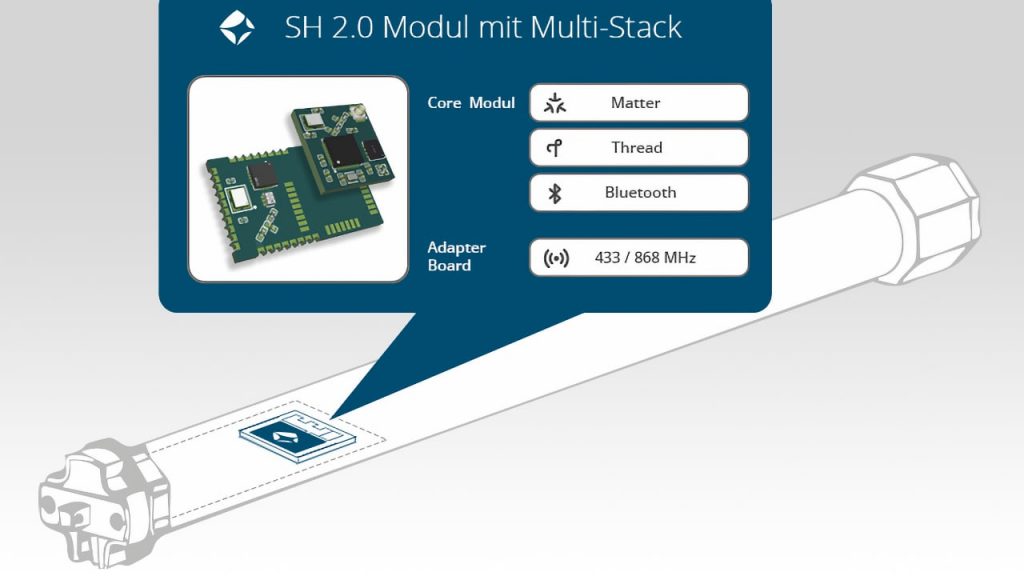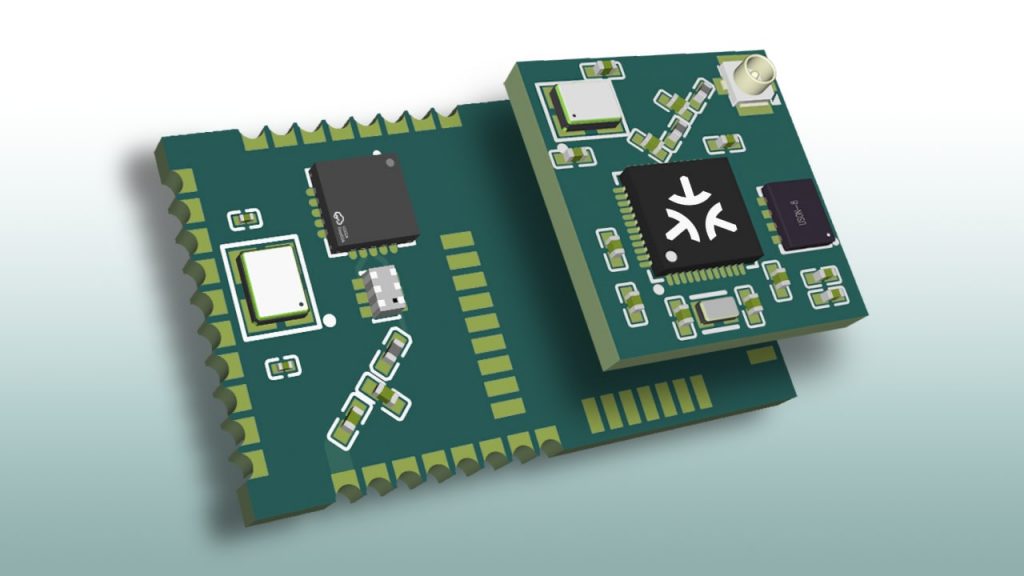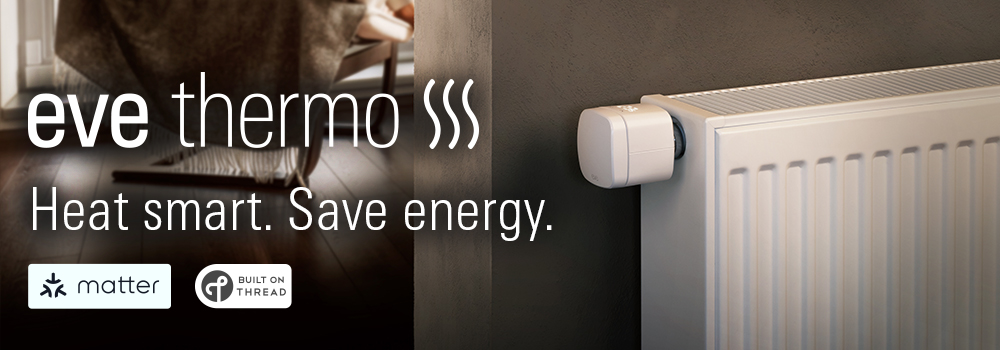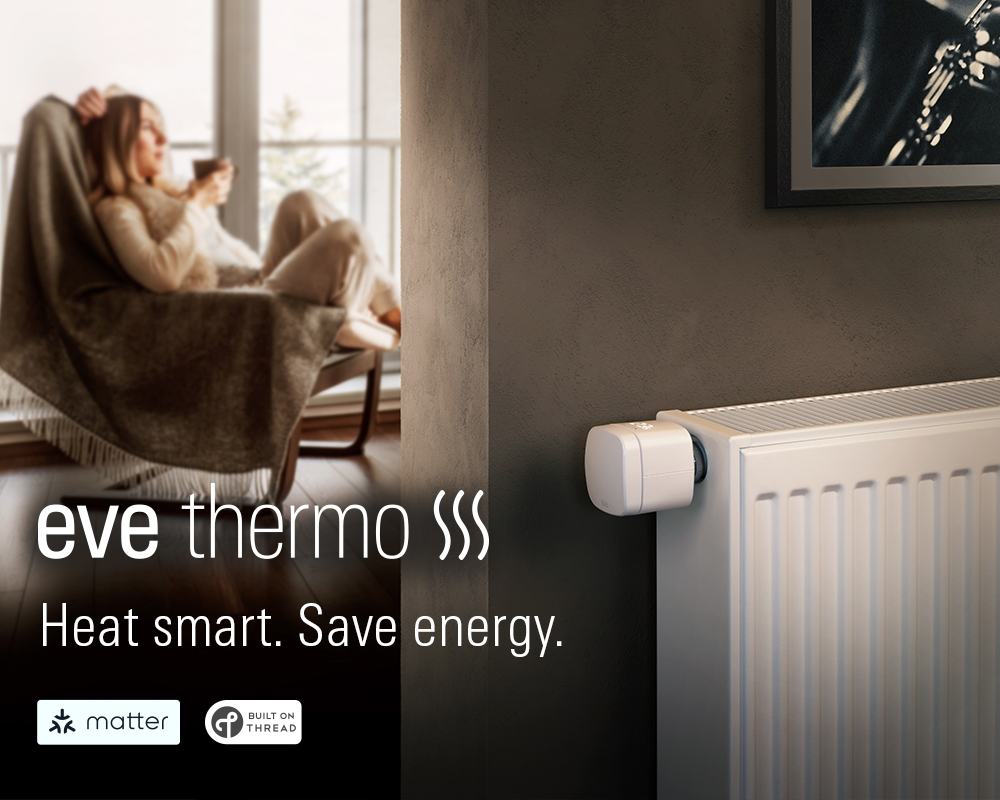Quite a few smart home manufacturers are under pressure – from several directions: First, the Matter standard is pushing them to make their devices compatible or risk losing access to major ecosystems like Apple, Google, Amazon, and others. Second, new EU cybersecurity regulations are coming into force, requiring encrypted communication and update capabilities for CE-certified smart home products.
Third, many companies have spent decades building proprietary systems based on sub-Gigahertz radio technologies. Often operating in bands like 433 MHz, 868 MHz, or 915 MHz (U.S.), these legacy systems lack native Matter support and are in danger of falling behind. A Matter Bridge can solve this issue, but many consumers see it as a necessary evil at best. Mediola, a German solution provider, aims to tackle all three challenges with its new Smart Home 2.0 Module (link). It was certified on September 26, 2025, according to Matter 1.4 specifications, and is available now.
The Mediola Smart Home 2.0 Module
The solution is specifically aimed at OEMs (original equipment manufacturers) in the field of technical building infrastructure. It enables manufacturers to adapt existing devices to meet new demands – without requiring major hardware redesigns.

The module’s key advantage lies in its modular architecture: a core module handles all Matter protocol logic, while a separate adapter board manages communication with sub-1 GHz radio technologies like 433 MHz or 868 MHz. For example, a legacy roller shutter motor can now be integrated into Matter-based ecosystems with Bluetooth communication running in parallel. Mediola also offers a companion smartphone app. Thanks to its energy-efficient Nordic nRF54L15 chip, the module is said to be suitable for battery-powered devices.
Multi-Stack: Bridging Old and New
Mediola’s multi-stack technology allows for the parallel use of different radio protocols and interfaces. Devices can be accessed via Matter (Thread), Bluetooth, and sub‑1 GHz radio. This should allow both new Matter-enabled devices and existing products with proprietary protocols to be integrated into a system.
Depending on the application, devices can be controlled via Bluetooth, a traditional remote control, or mobile apps. This flexibility allows installers, for example, during initial setup without network access, to operate devices locally – even before they’re connected to a gateway or Thread Border Router.
Responding to Regulatory Pressures
Looking ahead to the EU cybersecurity regulations taking effect in 2025 (such as RED and CRA), the module supports encrypted communication and OTA (over-the-air) updates. This allows manufacturers to bring their product lines into compliance without fundamentally altering their device architecture.
Software adaptations are still required, and OEMs will rely on Mediola as a technology partner to some extent. However, manufacturers who currently have sub-1 GHz products on the market and do not want to replace them with completely redeveloped series now have an option for modernization in the form of the Smart Home 2.0 module.
Share this information:


